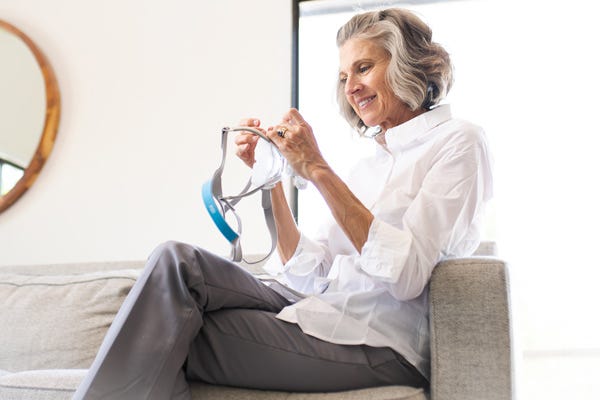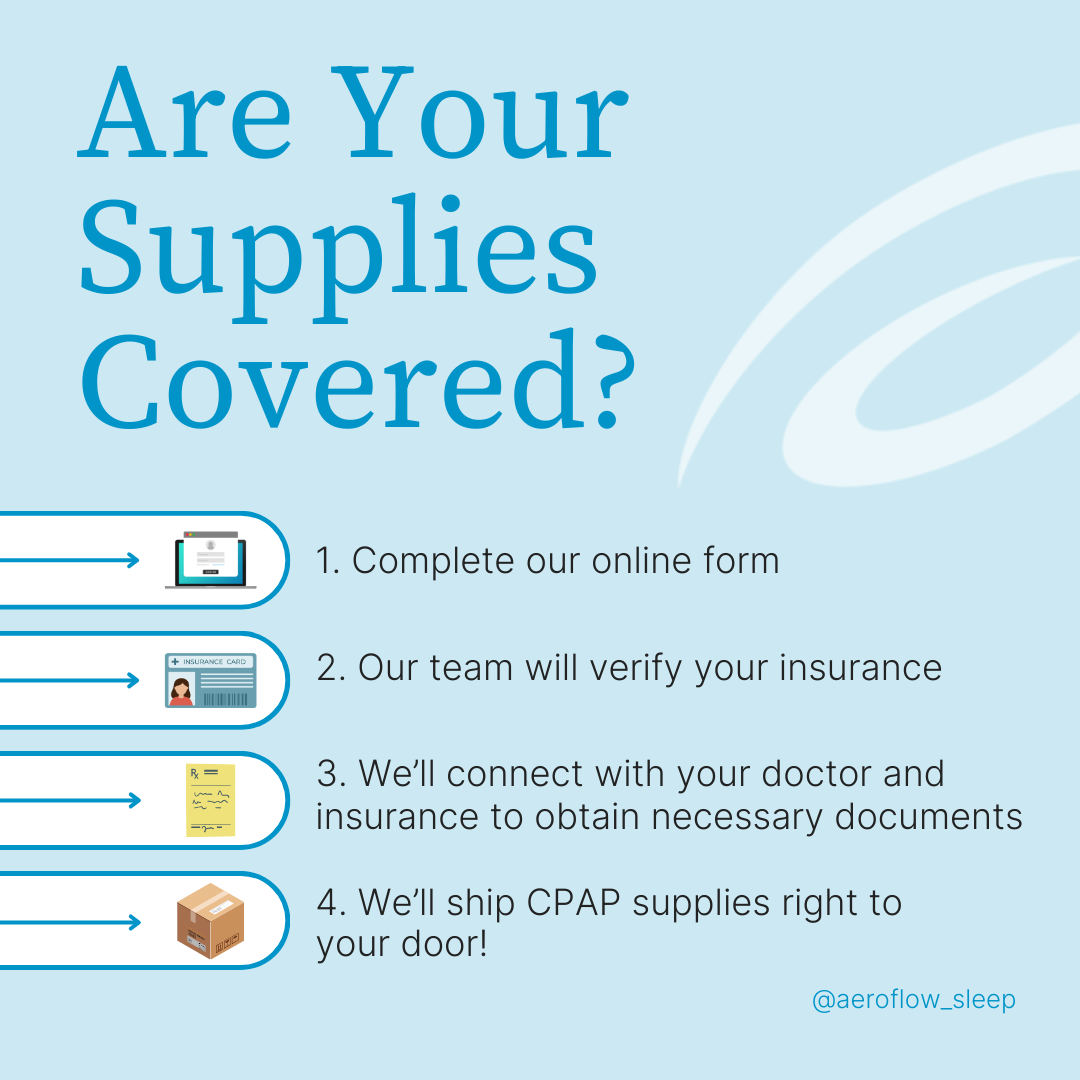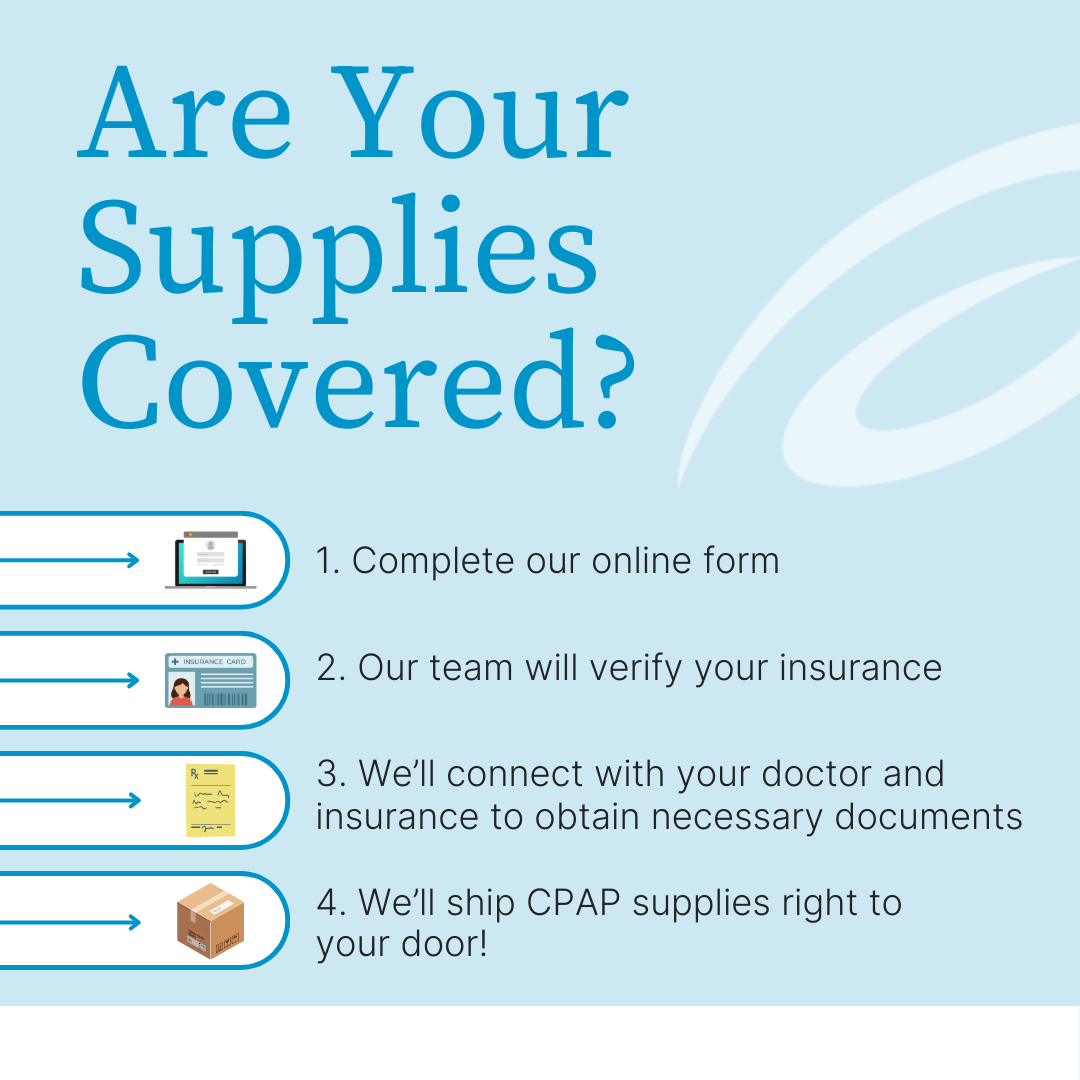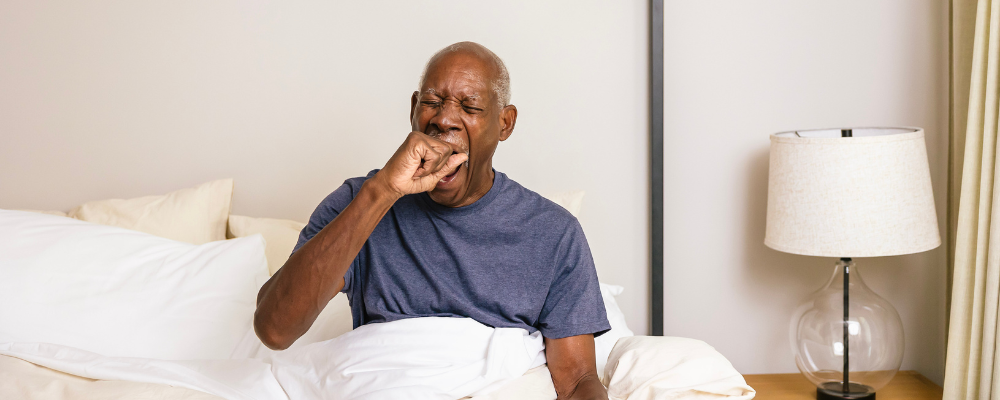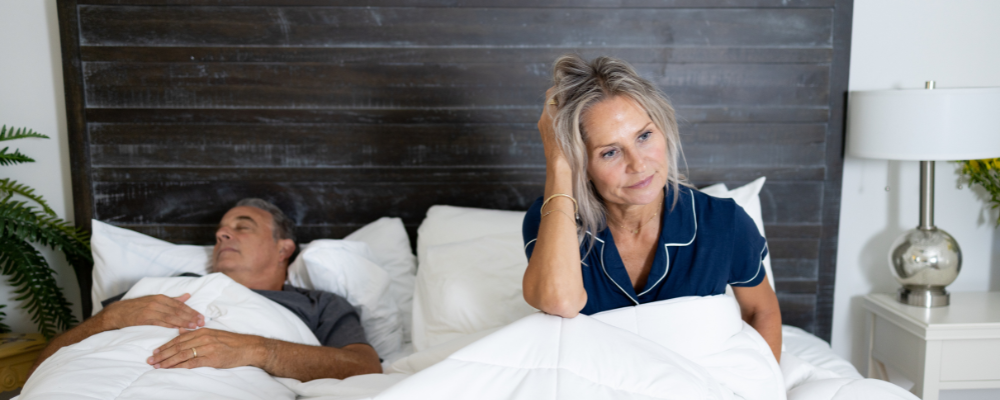If you’ve recently been diagnosed with Obstructive Sleep Apnea (OSA), your healthcare provider likely prescribed CPAP therapy. And you’re probably wondering how all this headgear and tubing could possibly lead to better sleep.
You’ve got questions, and that’s a good thing! Getting educated about CPAP treatment often leads to improved compliance– meaning you’re more likely to actually use your CPAP machine.
Today we’ll take a look at how this medical device works, and how to make it work for you. We’ll also answer some common questions; like “Does CPAP really work? and “How long does it take for CPAP to work?”
How CPAP Works
To understand how a CPAP machine works, it helps to first understand just exactly how obstructive sleep apnea (OSA) prevents you from breathing.
While the pathophysiology of OSA is quite complex, it occurs when there are anatomical obstructions, excessive fat deposits and/or loss of muscle tone in the nose or (more often) soft palate and the back of the throat that causes tissues to collapse and block the airway, until enough pressure is applied to “break through” the collapse and reopen the passage.
In other words, the muscles and soft tissues in your throat literally collapse into your upper airway, stopping the flow of air to your lungs.
So how does a CPAP machine prevent that? By using air pressure like a splint, to literally hold your airway open.
With CPAP therapy, pressurized air is forced into the airway in order to keep it open during the night, allowing air to flow in and out freely. The positive pressure of the air being blown into your nose or mouth (depending on your mask preference) pushes against the walls of your airway, which prevents the sections vulnerable to apnea from collapsing when you breathe.
As the pressurized air forces its way through to the lungs, normal breathing is restored, and you are once again able to enjoy a restful night’s sleep.
Do CPAP Machines Really Work?
The short answer is yes, absolutely.
In fact, airway pressure therapy is considered the most effective of the non-surgical treatment options for OSA. Studies consistently show that CPAP use improves daytime sleepiness and cognitive performance, while reducing high blood pressure and risk of cardiovascular events.
The slightly longer answer is that it depends on a variety of factors.
Chief among those factors is compliance. You have to use your CPAP device in order for it to work.
There are no two ways about it: there is a learning curve with CPAP therapy and sleep apnea treatment, and it takes time to adjust and acclimate to your new way of sleeping, as you slowly accept that your CPAP machine is your friend. This isn’t always easy to do, especially with the sudden addition of a mask and hose attached to your face and forced air pumping into your throat.
With time and practice many CPAP users wonder how they ever slept without it!
Which leads us to our next question…
How Long Does It Take for CPAP to Work?
Prospective CPAP therapy patients frequently want to know how long it takes to feel CPAP results. As with most things related to sleep apnea treatment, the answer varies, ranging from immediately to (hopefully not) never.
Many CPAP users feel better from the very first night! Some report that it takes a matter of weeks or– on rare occasions– even months to start to feel the benefits of CPAP. Often, this is the case with people who have difficulty adjusting to using the machine regularly.
There may also be a learning curve when it comes to your CPAP mask. It’s important to find the best type for your sleeping position and breathing style (mouth breathing, nose breathing, or combination.) If you have trouble initially finding a good seal or if you have air leaks, don’t worry, you may simply need a different mask! Try adding humidification and comfort accessories to help make the whole experience more pleasant.
When you notice beneficial CPAP results will depend on whether your pressure settings are correct, how well your CPAP mask fits, how diligently you use your CPAP machine, and the various physiological idiosyncrasies that make us all unique human beings.
The more consistently you use your CPAP, the more likely you are to see quick results. But more importantly, the more you use your CPAP the better your results are likely to be!
Types of CPAP Machines
Because of those “physiological idiosyncrasies” that make us unique, and the differences in our health care needs, there are different types of PAP machine that you may encounter.
Though they all provide the same positive airway pressure therapy, each type works a little bit differently.
Standard CPAP Machines
CPAP stands for Continuous Positive Airway Pressure, because the pressure settings remain at one continuous level all night long.
With CPAP therapy the same pressure is applied throughout the breathing cycle, during both inhalation and exhalation, since collapse can occur during either phase.
Standard, or fixed-pressure, CPAP is the most commonly prescribed type of PAP machine, because they are often the simplest and most effective solution to OSA.
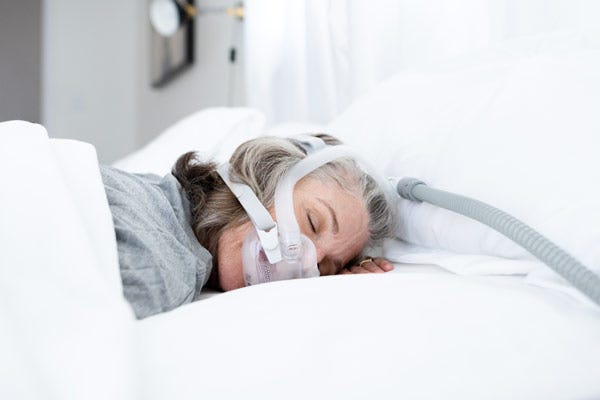

APAP Machines
APAP stands for Automatic Positive Airway Pressure, because of their ability to sense your airflow needs and adjust your pressure accordingly. You may also see these referred to as AutoPAP, AutoCPAPs or Auto-Titrating CPAPs, or simply CPAPs, since so many machines that are marketed as CPAPs actually have automatic adjusting capability.
An APAP machine may be recommended for those who have difficulty adjusting to traditional CPAP therapy, or who are prone to side effects that may be associated with CPAP, such as dry mouth, nasal congestion, runny nose, or nosebleeds.
BiPAP Machines
BiPAP stands for Bilevel Positive Airway Pressure, because BiPAP machines offer two levels of pressure. The first, a higher pressure level, provides effective relief from apneas while inhaling. The second is a lower pressure during exhalation, which allows you to breathe more naturally.
BiPAP machines are typically prescribed for OSA patients who have additional concerns that complicate their sleep disorders, such as COPD or a history of heart disease. Occasionally, BiPAP may be recommended for people with severe sleep apnea, because it may help them acclimate to their higher pressure needs.
Making CPAP Work for You
In most cases, given enough time and flexibility, CPAP machines can and will make a huge difference for those with OSA. Your sleep quality will improve greatly, while your likely daytime drowsiness will abate, if not disappear completely. And your overall quality of life will also benefit considerably, in myriad ways.
Hopefully, having a deeper understanding of the basic mechanics and physiology behind CPAP therapy will encourage you to pursue your sleep apnea treatment and persevere through the awkwardness that is regrettably part of the process when first getting acquainted with your new friend, the CPAP machine. In all likelihood, you’ll be very happy you did.
If you’re asking these questions because you’re having difficulty adjusting to your sleep therapy, or find it hard to use your CPAP as often as recommended, help is just a click away. Your dedicated Aeroflow Sleep Specialist can offer tips for making your therapy more comfortable, or provide solutions to common problems you may encounter.
References
Eckert, D. J., & Malhotra, A. (2008, February 15). Pathophysiology of adult obstructive sleep apnea. Proceedings of the American Thoracic Society. https://www.ncbi.nlm.nih.gov/pmc/articles/PMC2628457/
Antic, N. A., Catcheside, P., Buchan, C., Hensley, M., Naughton, M. T., Rowland, S., Williamson, B., Windler, S., & McEvoy, R. D. (2011, January 1). The effect of CPAP in normalizing daytime sleepiness, quality of life, and neurocognitive function in patients with moderate to severe OSA. Sleep. https://www.ncbi.nlm.nih.gov/pmc/articles/PMC3001789/
Antic, MBBS, PhD, N. (n.d.). Cardiovascular disorders associated with obstructive sleep apnea. Advances in cardiology. https://pubmed.ncbi.nlm.nih.gov/22005193/
Antic, N. A., Catcheside, P., Buchan, C., Hensley, M., Naughton, M. T., Rowland, S., Williamson, B., Windler, S., & McEvoy, R. D. (2011, January 1). The effect of CPAP in normalizing daytime sleepiness, quality of life, and neurocognitive function in patients with moderate to severe OSA. Sleep. https://www.ncbi.nlm.nih.gov/pmc/articles/PMC3001789/



